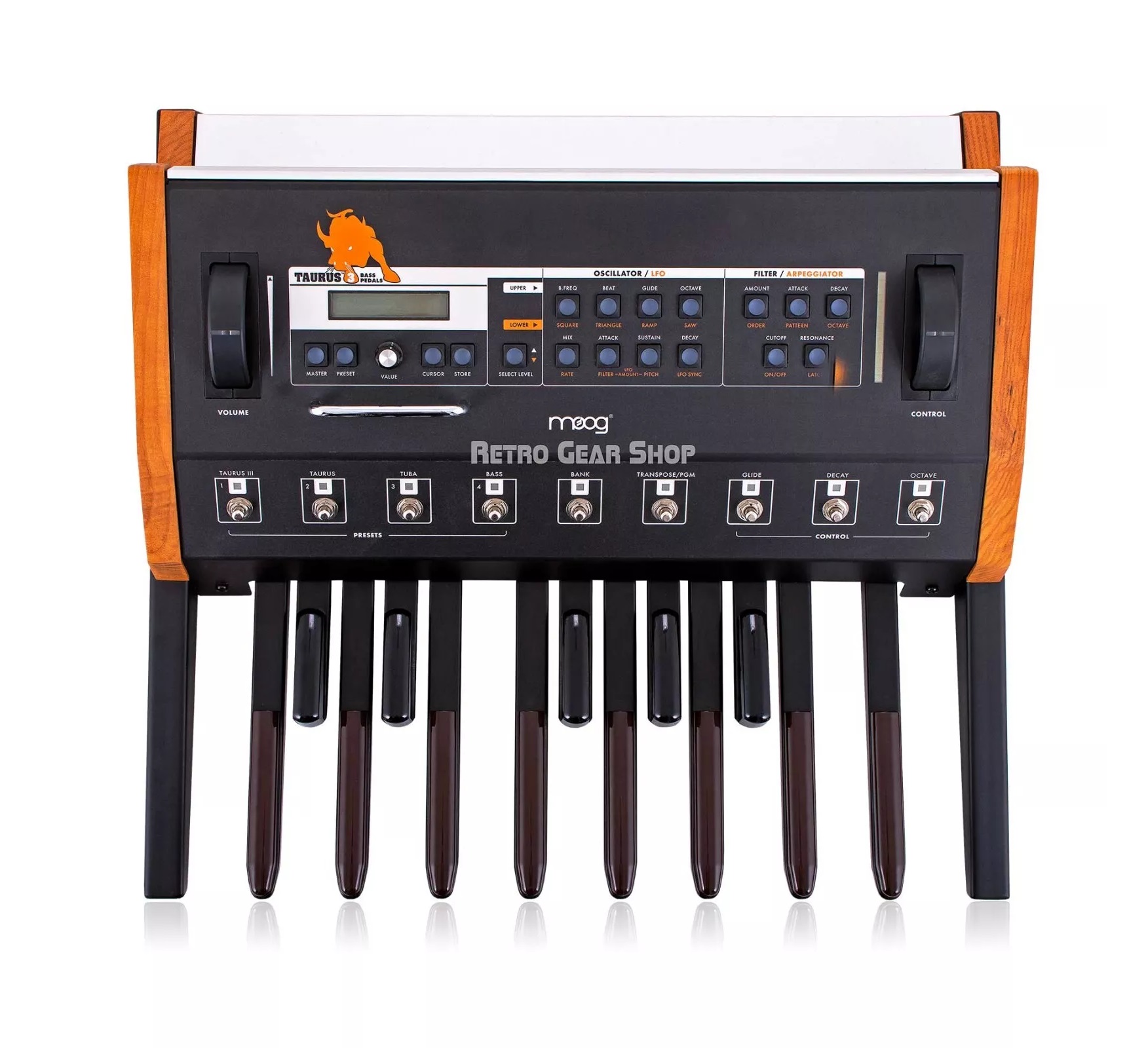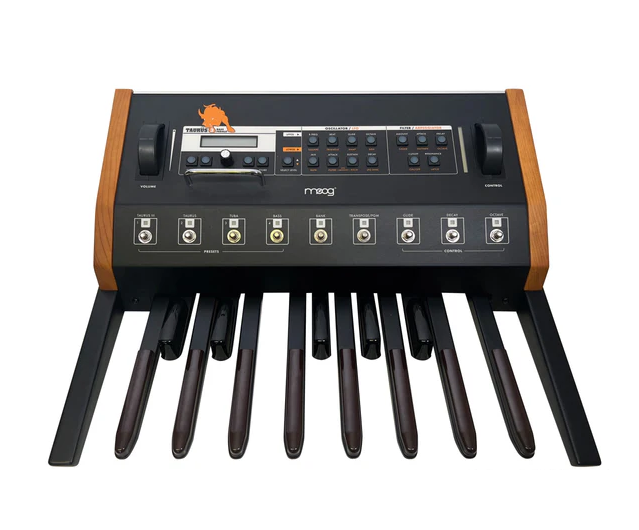Moog Taurus
Electronic Instruments
America
Between 1901 and present
Video
The Moog Taurus is a bass synthesizer known for its deep, rich, and powerful low-end tones. Designed as a pedal-operated instrument, it allows musicians to control bass sounds using foot pedals while simultaneously playing other instruments. The Moog Taurus belongs to the synthesizer family and falls under the category of analog bass synthesizers.
As a monophonic synthesizer, the Moog Taurus produces a single note at a time, emphasizing deep and resonant bass frequencies. Its design caters specifically to keyboardists and guitarists who require an additional layer of sound without using their hands. The instrument has been widely used in progressive rock, electronic music, and even heavy metal for its distinct, floor-shaking basslines.
History and Origin
The history of the Moog Taurus begins in North America during the 20th century. The first model, Taurus I, was manufactured from 1975 to 1981 and became iconic in progressive rock bands like Genesis and Rush. The Moog Taurus was developed by Moog Music, a pioneering company in synthesizer technology. It was first introduced as part of the Moog “Constellation” project, which also included the Polymoog and Lyra synthesizers. The Taurus was unique in its foot-operated design, allowing musicians to generate synth bass while keeping their hands free for other instruments.
Initially, the Taurus was designed for keyboard players who wanted to enrich their performance with powerful bass sounds. Its analog circuitry was based on Moog’s signature synthesizer design, utilizing voltage-controlled oscillators (VCOs), voltage-controlled filters (VCFs), and envelope generators to produce its legendary sound.
The first model, Taurus I, quickly became a favorite among musicians. Due to its success, Moog released Taurus II in 1981, featuring a more extensive interface and compatibility with external controllers. The latest version, Taurus III, was released in 2009, combining classic analog warmth with modern digital controls.
Types and Features
Moog Taurus I
The original Moog Taurus I, produced between 1975 and 1981, became famous for its rich and powerful analog bass tones. It featured three preset sounds—Bass, Tuba, and Variable—along with a variable mode for custom sound design. The Taurus I had two oscillators per voice, a 24dB/octave low-pass filter, and an expressive envelope section, making it a favorite among musicians.
Moog Taurus II
Launched in 1981, the Moog Taurus II introduced a new design with a detached control panel, resembling the Moog Rogue synthesizer. It featured an expanded range of oscillators, filters, and modulation options, but it lacked the preset sounds that made the Taurus I so distinctive. Despite its technological improvements, it was not as successful as its predecessor.
Moog Taurus III
In 2009, Moog Music revived the Taurus series with the Taurus III, a modernized version of the original. It included analog signal paths, improved MIDI control, and preset memory storage. The Taurus III retained the deep analog bass character while integrating USB connectivity and digital control for greater flexibility.
Music and Significance
The Moog Taurus is renowned for its incredible low-frequency power, making it a staple in various musical genres. Its unique ability to produce deep, sustained bass tones makes it invaluable in rock, progressive, electronic, and cinematic music.
Influence in Rock and Progressive Music
Bands like Rush, Genesis, and Pink Floyd utilized the Moog Taurus to enhance their live performances. Geddy Lee of Rush famously used the Taurus to add depth to the band’s sound, even when only two musicians were playing. Tony Banks of Genesis also employed the Taurus to create atmospheric and powerful bass sections.
Electronic and Experimental Music
With the rise of electronic music, the Taurus found a place in ambient, synthwave, and experimental compositions. Artists experimenting with deep bass drones and analog textures appreciate the Taurus’s ability to produce organic, evolving tones that modern digital synths struggle to replicate.
The Moog Taurus remains a legendary instrument in the world of synthesizers. From its inception in the 1970s to its modern revival, it has left an indelible mark on music history. Its deep, resonant bass and unique foot-controlled design make it an indispensable tool for musicians looking to add power and texture to their compositions. Whether in progressive rock, electronic music, or cinematic soundscapes, the Moog Taurus continues to stand out as a timeless and essential synthesizer.
FAQ
What materials are used in constructing a typical electronic keyboard?
Typical electronic keyboards are constructed using plastic for keys and casing along with electronic components such as circuit boards made from fiberglass reinforced epoxy laminate (FR4) or similar materials.
How does construction affect sound quality?
Construction affects sound quality significantly because materials can alter resonance characteristics; durable materials ensure consistent performance over time.
 Links
Links
References
 Similar
Similar
Instruments
Other Instrument
Categories



















